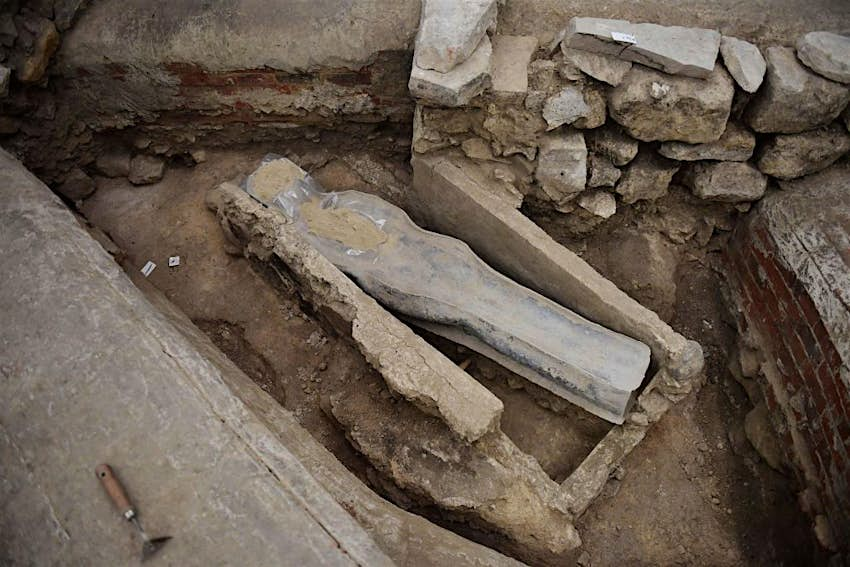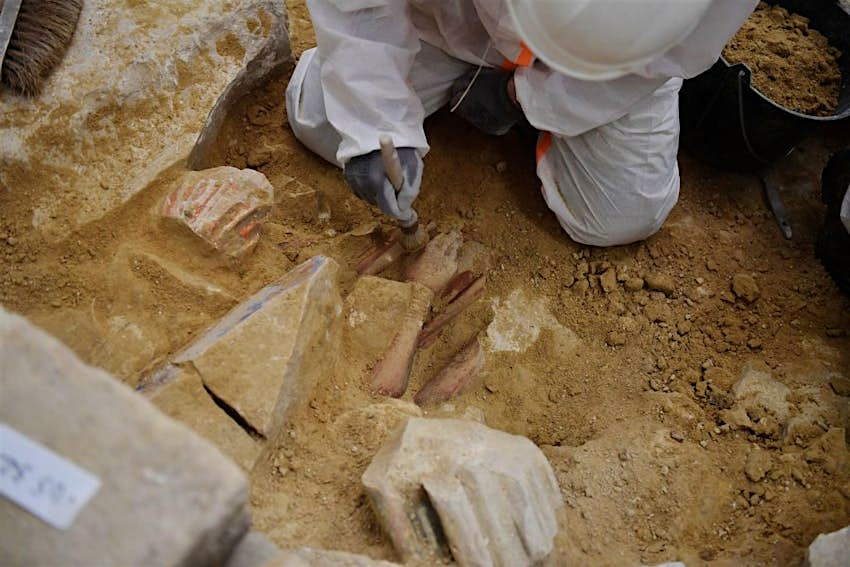The locked sarcophagus was found beneath the Notre Dame Cathedral in Paris.
We have seen enough movies to prevent us from going into sealed tombs. There are mummies. There are curses. There's too much potential to unleash on 2022, that's too much. The sarcophagus was found below the paving stone floor of Notre Dame.
The sarcophagus is in surprisingly good condition without any structural damage apart from a few minor scratches.

During restoration work at the fire-damaged cathedral, it was found alongside several other tombs and objects. The sarcophagus, made of lead and shaped like a human, is believed to have belonged to a high-ranking church official.
Scientists have already had a sneak peek inside the tomb and recorded cloth remains and organic matter such as hair and plants, alongside objects that have yet to be identified.
The sarcophagus will be sent to the Institute of forensic Medicine in Toulouse, where carbon dating technology can be used to learn more about the person and objects inside.
If it turns out that is a sarcophagus from the Middle Ages, we are dealing with an extremely rare burial practice.
The sarcophagus will be examined with an anthropological focus, rather than an archaeological one, according to the head of INRAP. When work is done, it will be reburied in the cathedral.
He explained that a human body is not an archaeological object.

Since the devastating fire at Notre Dame in April, INRAP has been responsible for archaeological digs.
Among tombs, statues, sculptures and medieval ceramic furniture, the team uncovered painted fragments of the original rood screen. The rood screen was an ornate partition that separated the choir from the clergy when mass was in session. The Louvre has parts of it that were discovered earlier in the 19th century.

The UNESCO world heritage site is expected to be open to the public in the spring of 2024, just in time for the Paris Olympics, according to the president. Even though the museum is closed, people can still visit Notre Dame's square, which overlooks the crypt and the cathedral's entrance.
The Gothic cathedral can be seen through an augmented reality exhibit in Paris. There is an exhibit at the National Museum Building in Washington, DC. The Notre-Dame de Paris: The augmented exhibition runs through September 26, 2022.